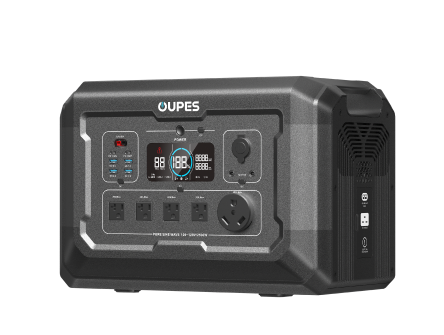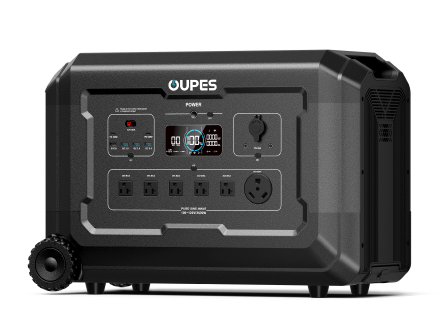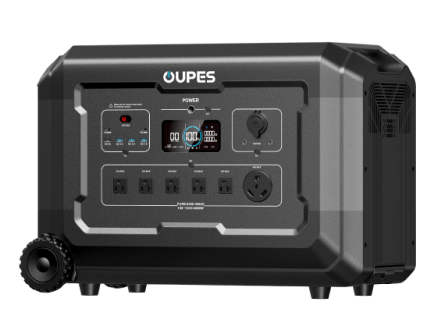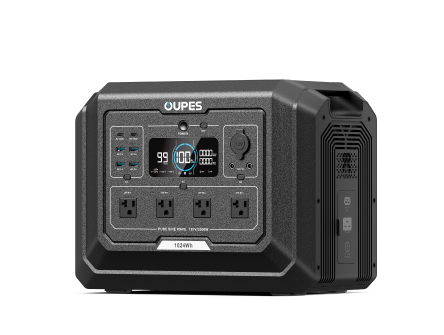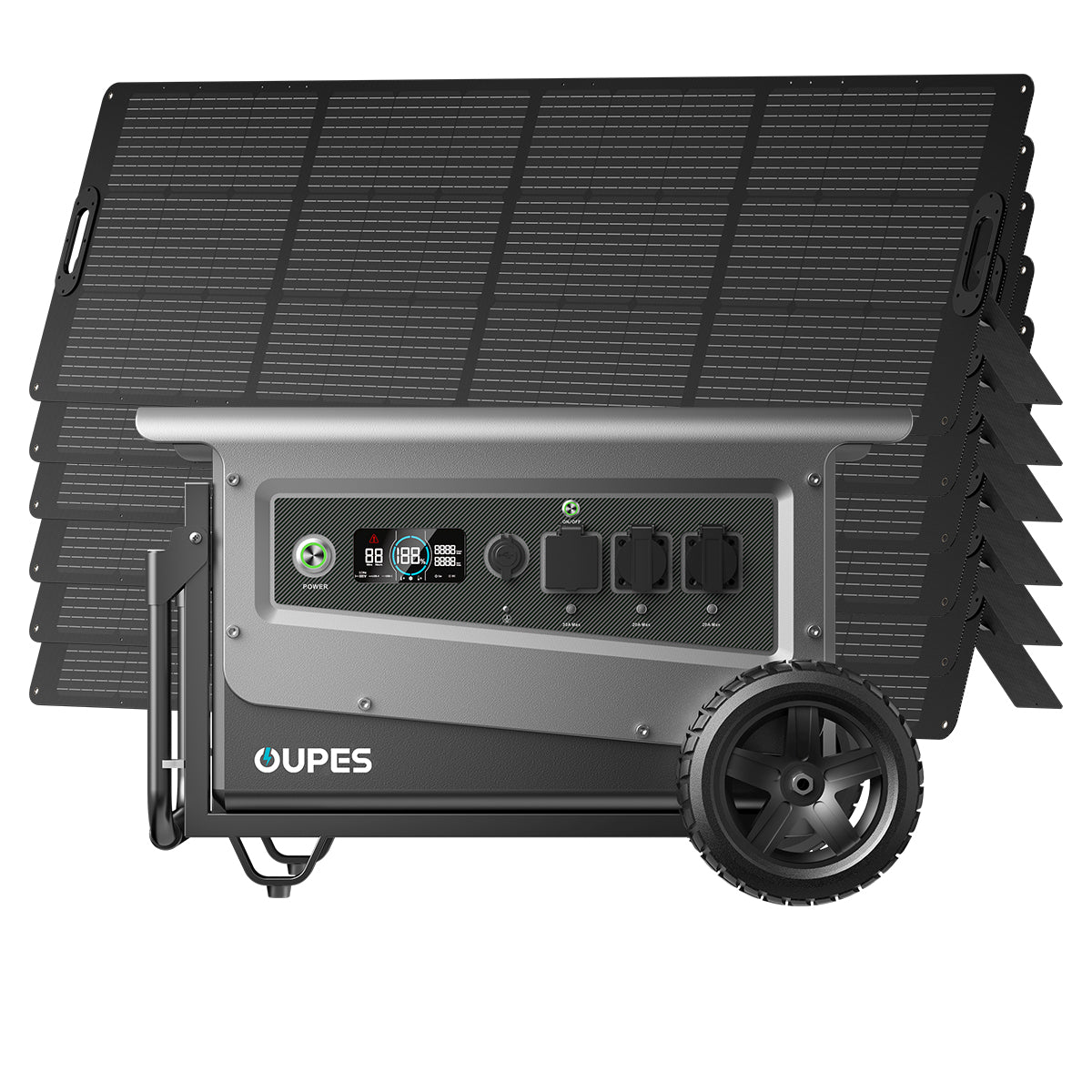
Solar generator kits have revolutionized the way people harness and utilize renewable energy. Whether used for backup power, outdoor adventures, or off-grid living, they offer a convenient and eco-friendly solution. However, one of the most frequently asked questions is: how long does it take to charge a solar generator kit? The answer is not as straightforward as it might seem, as several factors influence charging time.
Understanding these factors, including the type of solar panels, battery capacity, and environmental conditions, is crucial for optimizing charging efficiency. Whether you're a first-time solar user or an experienced off-grid enthusiast, gaining insight into charging times can help you plan more effectively and make the most of your solar power system.
Factors That Influence Solar Generator Charging Time
The time required to charge a solar generator kit varies widely and is influenced by multiple factors. These factors determine whether a generator will be ready in a few hours or require a full day to reach maximum capacity.
One of the most significant variables is the capacity of the solar generator's battery. Measured in watt-hours (Wh), battery capacity indicates how much energy a generator can store. A generator with a 500Wh battery will charge significantly faster than one with a 2000Wh battery, assuming the same charging input.
Another critical factor is the power output of the solar panels used for charging. Solar panel output is measured in watts, and higher-wattage panels can generate more electricity in less time. A 100-watt panel, for instance, provides a slower charge than a 400-watt panel. The total wattage of connected panels determines how quickly energy flows into the generator.
Environmental conditions also play a vital role. Solar panels operate most efficiently in direct sunlight, but factors such as cloud cover, shading, and the angle of the panels can reduce charging speed. Peak sunlight hours—typically between 10 AM and 4 PM—offer the most efficient charging conditions.
Additionally, the type of charge controller within the generator affects how energy is managed. Maximum Power Point Tracking (MPPT) controllers are more efficient than older Pulse Width Modulation (PWM) controllers, optimizing power transfer and reducing charging time.
Charging with Solar Panels: What to Expect
Solar panel charging is the most sustainable and widely used method for replenishing solar generator kits. While it is an excellent way to harness free energy from the sun, charging times can vary significantly based on system specifications.
A basic calculation for estimating charging time involves dividing the battery capacity by the total solar input. For example, a 1000Wh generator charged with a 200-watt solar panel setup in ideal conditions would take approximately five hours (1000Wh ÷ 200W = 5 hours). However, real-world conditions rarely provide ideal performance, so actual charging time may be longer.
Optimizing solar panel placement is essential for maximizing efficiency. Panels should be positioned at the correct angle based on geographic location and the season. Tilting the panels to align with the sun's position ensures the highest energy absorption.
Regular maintenance of solar panels can also improve charging efficiency. Dust, dirt, and debris can reduce power generation, so periodic cleaning is recommended to ensure optimal performance. Additionally, using high-efficiency monocrystalline panels instead of polycrystalline panels results in faster charging due to their superior energy conversion rates.
For those needing faster charge times, adding extra panels to increase total wattage is an effective solution. Many solar generators allow expansion, enabling users to connect multiple panels for increased power input.
Alternative Charging Methods and Their Speeds
While solar panels are the most environmentally friendly charging method, they are not the only option. Many solar generator kits support alternative charging methods, such as AC wall outlets and car chargers, which can be useful in situations where solar charging is not feasible.
Charging via an AC wall outlet is the fastest method in most cases. Since electrical grid power is stable and constant, it can recharge a solar generator in just a few hours. For instance, a 1000Wh generator connected to a 500-watt AC adapter would reach full capacity in approximately two hours. Many solar generators include fast-charging technology to reduce charging times further when plugged into a wall outlet.
Car charging, while convenient for road trips and travel, is significantly slower than other methods. Most car chargers provide only 12V DC power, which results in a low-wattage charge rate. For example, if a generator charges at 100 watts via a car outlet, it would take ten hours to charge a 1000Wh battery fully.
Some advanced solar generators offer hybrid charging, which allows users to combine multiple power sources. Using both solar panels and an AC charger simultaneously can dramatically reduce charging time, ensuring the generator is ready for use in the shortest period possible.
Tips to Reduce Solar Generator Charging Time
While charging times depend on several factors, there are steps users can take to minimize charging duration and maximize efficiency.
Using higher-wattage solar panels is one of the simplest ways to speed up charging. If a generator supports multiple input connections, increasing total wattage will reduce the time needed to reach full capacity. Always check the generator's maximum solar input rating to ensure compatibility with additional panels.
Keeping the battery from fully depleting before recharging can also help. Lithium-ion batteries, which are commonly used in solar generators, perform best when maintained within a charge range of 20-80%. Frequent partial charging cycles are more efficient and prolong battery lifespan compared to deep discharges.
Monitoring charge controllers and inverter efficiency is another crucial factor. Ensuring that the generator uses an MPPT controller instead of a PWM controller can significantly enhance solar charging efficiency, extracting maximum power from the panels.
For users relying on solar power, investing in high-quality solar panels with superior energy conversion rates makes a noticeable difference. Higher efficiency panels generate more electricity under the same sunlight conditions, reducing charging time and improving overall reliability.
Final Thoughts on Solar Generator Charging Time
The time it takes to charge a solar generator kit depends on numerous factors, including battery capacity, solar panel wattage, environmental conditions, and charging methods. While solar panels offer a sustainable and independent energy source, AC wall charging remains the fastest method when available.
Understanding these charging dynamics helps users make informed decisions when selecting a solar generator. Whether planning for emergency preparedness, off-grid living, or outdoor excursions, optimizing charging efficiency ensures a reliable and continuous power supply.
By implementing best practices such as proper solar panel placement, using MPPT controllers, and maintaining battery health, users can significantly reduce charging time and get the most out of their solar power investment.

